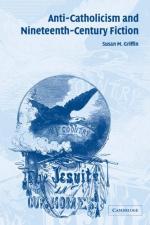|
This section contains 9,359 words (approx. 32 pages at 300 words per page) |

|
SOURCE: "Awful Disclosures: Women's Evidence in the Escaped Nun's Tales," in PMLA, Vol. 111, No. 1, January, 1996, pp. 93-107.
Below, Griffin discusses the figure of the escapee in the anti-Catholic literature of the early nineteenth century. She relates questions of veracity concerning the escapees' claims to the larger question of the role of women in nineteenth-century American culture.
Between 1835 and 1860 Protestant Americans avidly read a series of reports by renegades from an ancient secret society: the church of Rome. Women's tales of escape from Catholicism were the most numerous and the most notorious of these reports; especially in the 1830s and 1850s, the runaway nun was a prominent figure in the American cultural and political imagination. As Richard Hofstader suggests, the renegade's role in establishing truth goes beyond the spy's: the renegade not only conveys but also is evidence. I argue that these female renegades reveal still more, for they...
|
This section contains 9,359 words (approx. 32 pages at 300 words per page) |

|


